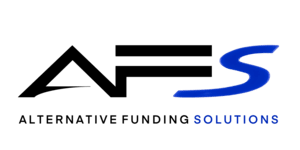A revolving line of credit offers flexibility and financial freedom, whether for personal use or business operations. Unlike traditional loans with fixed terms, a revolving line of credit allows you to borrow, repay, and borrow again as needed, making it an ideal solution for unpredictable cash flow. However, qualifying for this type of credit requires a solid understanding of the eligibility criteria, a strategy to improve your chances, and careful planning.
In this guide, we’ll walk you through the process of qualifying for a revolving line of credit, provide essential tips for fast approval, and highlight common mistakes to avoid. Whether you’re a business owner looking to manage cash flow or someone seeking personal financial flexibility, this article will equip you with the knowledge to navigate the qualification process successfully.
- Summary
- The article explains how to qualify for a revolving line of credit, emphasizing its flexibility and financial benefits.
- It outlines the key requirements, such as a good credit score, stable income, and possibly collateral, to increase your chances of approval.
- The article provides a step-by-step guide for fast approval, covering important actions like checking your credit score, analyzing your debt-to-income ratio, and preparing necessary documentation.
- It also highlights common mistakes to avoid, such as applying too frequently and overlooking terms, while offering tips to improve your chances of securing approval quickly.
- Key takeaways for applicants include: Check and improve your credit score before applying. Lower your debt-to-income ratio to show financial responsibility. Shop around for the best terms and prepare all necessary documentation. Avoid applying too frequently and be mindful of fine print.
What is a Revolving Line of Credit?
A revolving line of credit is a flexible borrowing option that provides a maximum credit limit, allowing you to borrow up to that limit, repay, and borrow again. It’s commonly offered by financial institutions, including banks, credit unions, and online lenders.
Personal vs. Business Revolving Line of Credit
- Personal: This is usually unsecured, meaning it doesn’t require collateral, and is often used for personal expenses such as home repairs, medical bills, or managing cash flow.
- Business: Businesses typically use revolving lines of credit to cover operational costs, inventory purchases, or unexpected expenses.
Revolving Line of Credit Requirements
The key advantage of a revolving line of credit is its flexibility. You only pay interest on the money you borrow, and the credit is available to use again once you’ve paid off your balance. However, before applying, you need to meet certain eligibility criteria. Here’s a breakdown:
1. Credit Score Requirements
Your credit score plays a critical role in qualifying for a revolving line of credit. Lenders typically look for:
- 700 and above: Best terms and easy approval.
- 650-699: Possible approval, but expect higher rates.
- Below 650: It may be tough to qualify unless the credit line is secured by collateral.
Tip: If your credit score isn’t ideal, improve it by paying off debts or disputing any errors before applying.
2. Income Requirements
Lenders also want to ensure you have a stable income to repay the borrowed amount. They will evaluate your debt-to-income ratio (DTI), which compares your monthly debt payments to your income. A DTI of 36% or lower is ideal.
3. Collateral Requirements
While unsecured credit lines don’t require collateral, secured credit lines do. This could include personal assets like real estate or business property. Collateral may be necessary if your credit history or income doesn’t meet lender criteria.
Eligibility Criteria for a Revolving Credit Line
When applying for a revolving line of credit whether for personal or business use lenders will evaluate several key factors to determine your eligibility:
- Credit Score: Your credit score is one of the most important factors. A higher score generally increases your chances of approval and helps you secure better terms.
- Income and Debt-to-Income (DTI) Ratio: Lenders will assess your income and compare it to your monthly debt payments. A lower debt-to-income ratio (ideally below 36%) demonstrates your ability to manage additional credit responsibly.
- Collateral (for Secured Lines): If applying for a secured credit line, you may need to offer personal or business assets, such as property or equipment, to back the loan.
- Business Financial Health (for Business Credit Lines): For business credit lines, lenders will evaluate your business’s financial health, including revenue, expenses, and cash flow stability, to ensure you can handle additional credit.
Steps to Qualify for a Revolving Line of Credit
Follow these essential steps to increase your chances of approval:
1. Check Your Credit Score
Start by reviewing your credit report. If your score is below 700, take time to improve it before applying. Consider paying off outstanding debts, correcting any errors, and avoiding new credit inquiries to boost your score.
2. Analyze Your Income and Debt
Your debt-to-income ratio (DTI) plays a significant role in approval. Lower your existing debt or increase your income to reduce your DTI. A lower ratio shows lenders that you can manage additional credit responsibly.
3. Shop Around for the Best Offer
Compare offers from multiple lenders, including banks, online lenders, and credit unions. Look beyond just the interest rate, consider fees, terms, and borrowing limits to find the best fit for your financial needs.
4. Prepare Documentation
Gather the necessary documentation to speed up the application process. Be prepared to provide:
- Proof of income (e.g., pay stubs, tax returns)
- Bank statements
- Personal identification
- Business financials (for business credit lines)
5. Apply for the Credit Line
Submit your application online or in person, depending on the lender’s process. Be ready for a credit check and, if applying for a business line, a personal guarantee may be required.
Tips to Qualify for a Revolving Line of Credit Fast
1. Improve Your Credit Score Quickly
If your credit score isn’t where it needs to be, take immediate action to boost it:
- Pay off outstanding balances to reduce your credit utilization rate.
- Review your credit report for errors and dispute any inaccuracies.
- Avoid new credit inquiries in the months leading up to your application, as they can temporarily lower your score.
2. Lower Your Debt-to-Income Ratio (DTI)
Lenders are more likely to approve your application if you have a low debt-to-income ratio. Improve your DTI by:
- Paying down high-interest debt first to reduce your monthly obligations.
- Increasing your income, either through a raise, side gig, or other sources of funds, to boost your financial standing.
3. Apply with a Co-Signer
If your credit score is less than stellar, applying with a co-signer can improve your chances. Their strong credit history and financial stability provide additional assurance to lenders, which can help you secure better approval terms.
Common Mistakes to Avoid When Applying for a Revolving Line of Credit
Mistake 1: Overlooking the Fine Print
Always read the terms carefully. Look out for hidden fees, high interest rates, and prepayment penalties that could cost you more in the long run.
Mistake 2: Applying Without Understanding Your Finances
Only apply for a credit line you can realistically repay. Lenders assess your ability to repay, so make sure you have a clear understanding of your income, expenses, and overall financial situation before applying.
Mistake 3: Applying Too Frequently
Multiple applications within a short period can lower your credit score due to hard inquiries. Limit your applications to avoid harming your credit and to keep your score intact.
Frequently Asked Questions
Q. What is the minimum credit score required for a revolving line of credit?
Typically, a credit score of 650 or higher is required to qualify for a revolving line of credit. However, if your score is above 700, you may receive more favorable terms, such as lower interest rates.
Q. How can I qualify for a revolving line of credit with bad credit?
If you have bad credit, you can improve your chances by securing the line with collateral, applying with a co-signer, or taking steps to improve your credit score before applying.
Q. Can I use a revolving line of credit for business expenses?
Yes, businesses commonly use revolving lines of credit to manage cash flow, purchase inventory, or cover operational costs, offering flexibility for various business needs.
Q: What are the steps to qualify for a revolving line of credit?
The steps are:
- Check your credit score.
- Analyze your income and debt.
- Shop for the best offer.
- Prepare documentation.
- Submit your application.
Conclusion
Qualifying for a revolving line of credit can provide much-needed flexibility in managing your finances. By following the steps outlined in this guide and avoiding common mistakes, you can increase your chances of approval and secure a credit line that works for you.
Don’t wait until cash flow becomes a problem. Apply today with AFS and get the flexible revolving line of credit your business needs to grow.

